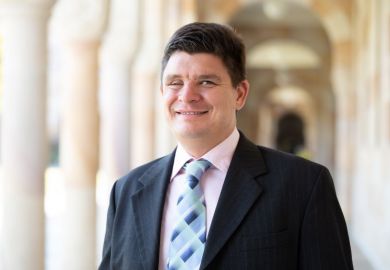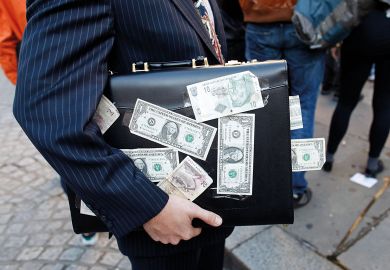Most of the essays published in these volumes were presented at a conference, "The Trial in History", held in Manchester in September 1999.
The authors come from a range of scholarly disciplines on both sides of the Atlantic: historians and legal historians, lawyers and a sociologist.
Each volume has nine chapters covering a variety of topics over different periods of time. Some focus on individual trials and some on the trial process itself. The authors have been meticulous in their research: trial records have been thoroughly investigated and the numerous footnotes bear the hallmarks of dedicated scholarship. They vary enormously, however, in interest and quality.
Chapter one of Judicial Tribunals deals with the trial process. It takes us through the nature of a trial and reminds us, if we need reminding, that there are three elements fundamental to a fair trial: what is described as "internal rationality" (what we would call decisions on the evidence), public access and the independence of the trial process from government or any of the parties. This is fairly elementary, even though it is accompanied by some 80 weighty footnotes.
The next four chapters cover the period from the 13th to the 17th century, which will be of great interest to legal historians. The chapter on the rise of juries is of particular significance today. The author points out that for nearly two centuries, the medieval English jury differed fundamentally from the modern jury in that its members came from the immediate vicinity of the dispute and thus came to the trial already informed about the facts.
Because they lived in small tight-knit communities, they were well aware of their neighbours' affairs, so they might be spoken to by interested parties out of court. As a result, it was not necessary for witnesses to attend.
The jurors were considered sufficiently informed to be able to act as witnesses themselves. They therefore came to be described as "self-informing". Those who unthinkingly support jury trials because they have been part of the democratic judicial process for hundreds of years fail to appreciate, as this chapter makes clear, the significance of the jurors' role in the 13th and 14th century.
The two chapters on the role of judges in the royal courts of late-medieval England and of trials in manorial courts will be of interest to only a limited number of legal historians, although the development of the way that justices of peace were appointed has great historical significance. By the end of the 15th century, there had been a transition from benches comprising men in holy orders to panels of non-clerical judges, and the justices appear to have become more professional.
The role of judges in trials in the English ecclesiastical courts from the mid-15th century to the middle of the 17th century is the subject of the fifth chapter. The courts were organised by diocese, with an appeal to the provincial courts of Canterbury and York. Because they met frequently and were local, they were more readily available than the secular courts.
There seems to have been a fairly wide variety of litigation, including libel, breach of contract and breach of faith, together with disciplinary cases for violation of the churches' laws, such as prosecutions for adultery or failure to attend church.
Ecclesiastical courts continue to exist today as consistory courts but are primarily concerned with the fabric of the church and, occasionally, with disciplinary matters.
The attempted trial of Boniface VIII for heresy - the subject of chapter six - is a striking example of the conflict between the crown and the church. For eight years, between 1303 and 1311, Boniface was the subject of accusations of being a false pope and usurper of the apostolic see. The chapter shows the strength of feeling between the crown and the church, although the author does not attempt to deal in any depth with the political issues involved.
Two chapters, one in each volume, relate to sodomy trials, the first in Geneva in the mid-16th century, and the second in England in the mid-19th century. They are used, in one case, to illustrate reasonable doubt and, in the other, the use of character evidence. In the former, a great deal of statistical evidence has been accumulated to show the stress laid by magistrates and lawyers on natural, versus unnatural, acts. A table sets out, in considerable detail, an overview of the trials, the offences alleged, the number of sexual partners and the sentences or verdicts. In the essay on Victorian sodomy trials, use of evidence of character and of propensity are dealt with, which have some relevance to the modern criminal trial. Otherwise, it is not immediately apparent why the subjects have received such detailed investigation.
One of the criticisms of these essays is that no coherent pattern or thread links one essay with the next. And there does not appear to be any rational explanation as to why one subject has been chosen and not another, or why the chapters appear in the order in which they do.
Take the penultimate chapter in volume one, which relates to a scandal in the summer of 1614 at an aristocratic convent in Venice. A nun called Laura was found guilty of having sexual intercourse with a nobleman in a storeroom. The story is used to illustrate the difficulties inherent in drawing historical conclusions from court records, but while Laura's confessions are said to be of vivid interest to historians, the ordinary reader may be left with some sense of disappointment.
In the final chapter, we return to Venice in the 16th century for the trial of Gorgio Moreto before the Inquisition. He was a ribald Venetian sailor whose crime was to haunt the Jewish quarter of Venice. There was a denunciation, an inquiry and sworn testimony that are all set out in the record of proceedings. Moreto gave evidence, was cross-examined and, in the result, was forbidden to enter the Jewish ghetto. However, within two months he was back before the inquisitor for having strayed back into forbidden territory and this time was sent to the galleys for three years.
The second volume, Domestic and International Trials , starts with an essay on evidence. It sets out, with tables and statistics, the names of lawyers raising objections to oral evidence in civil cases. The author suggests that this practice came from the criminal courts, where advocates, unable to address a jury, frequently resorted to making unnecessary objections. It is by no means easy, however, to see the value of this detailed research.
The next chapter has valuable lessons for today. The value of expert medical testimony is still the subject of acute debate, as it was in the 19th century. This chapter deals with the case of 12-year-old William Allnutt, who poisoned his grandfather by mixing arsenic in his sugar. It discusses how far a medical expert, in giving his opinions, should be able effectively to determine the issue of fact that the jury has to decide.
Next comes the essay that will perhaps most appeal to the general reader.
It deals with the case of the trial of Queen Caroline, and is historically very interesting as well as giving an insight into the legal ramifications of the debate in the House of Lords.
"Trials in camera in security cases" - the next subject - deals with spy cases from the first world war onwards. The author makes a perfectly valid point that, in many cases, secrecy was greatly overdone. But, by giving so many identical examples, the essay tends to submerge its central message in too much detail.
The final four chapters are devoted to war-crimes trials. They deal with the legality of national and international trials in detail, specifically Nuremberg, Tokyo, Yugoslavia and Rwanda. The trial of Maurice Papon, which has a chapter to itself, also throws light on bureaucracy under the Vichy regime and the reaction of French politicians to the Occupation.
International lawyers will find these chapters provide much material for debate and controversy. The trial of Slobodan Milosevic, which is ongoing, is fully reported, and arguments about legitimacy and legality are well analysed.
The idea behind the series of essays is a good one. However, they would be much more readable if they were more sharply focused or interrelated. I suspect that a great number of ordinary readers will find that many of the subjects are of little or no interest to them. Given the distinction of the authors, and the quality of the research, that is a great pity.
Sir Oliver Popplewell was a High Court judge, 1983-2000, and is the author of Benchmark .
Judicial Tribunals in England and Europe, 1200-1700: The Trial in History, Volume 1
Editor - Maureen Mulholland, Brian Pullan and R. A. Melikan
Publisher - Manchester University Press
Pages - 186pp
Price - £40.00
ISBN - 0 7190 6342 6
Register to continue
Why register?
- Registration is free and only takes a moment
- Once registered, you can read 3 articles a month
- Sign up for our newsletter
Subscribe
Or subscribe for unlimited access to:
- Unlimited access to news, views, insights & reviews
- Digital editions
- Digital access to THE’s university and college rankings analysis
Already registered or a current subscriber? Login



